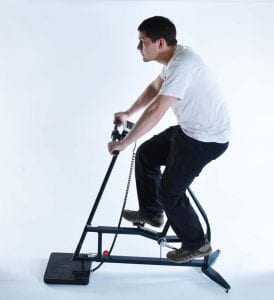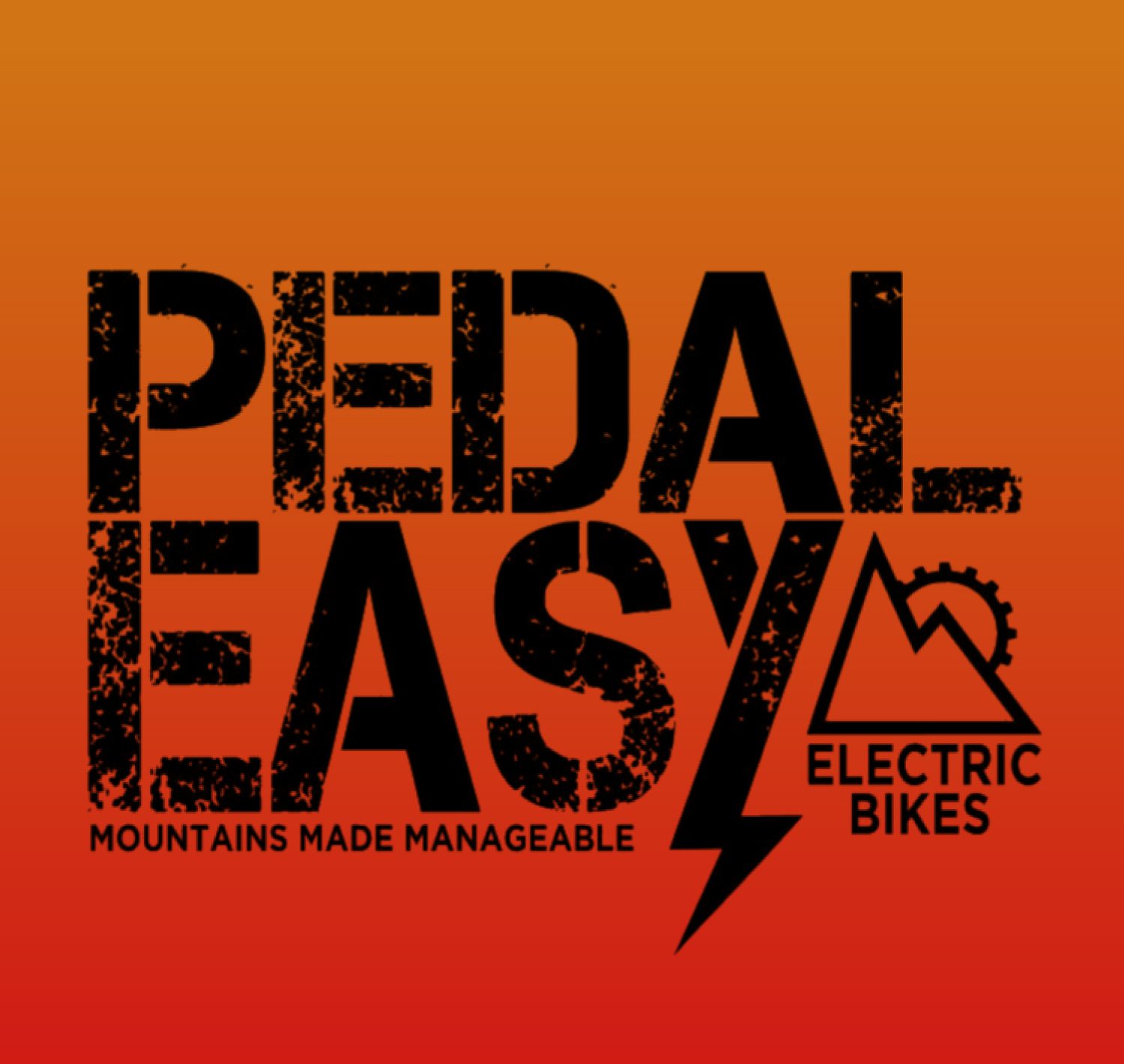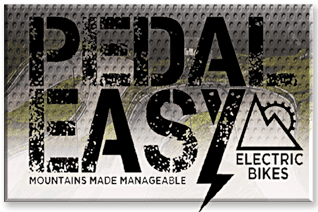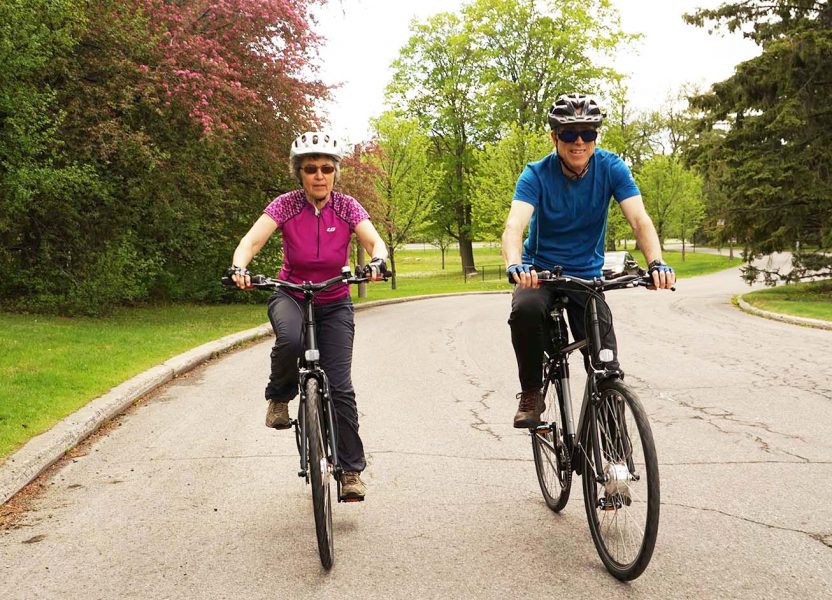Bike comfort
With their relatively high handlebar height and upright riding position our bikes are clearly designed for comfort. Distribution of the bike’s weight “fore-and-aft” is also important and we have paid design attention to that. We have chosen saddles specifically designed for e-bikes, because the rider’s full weight is more often fully on the saddle and not the pedals.
“Comfort” is of course a hard feeling to define & quantify, as is proper set-up and “fit”. For readers who are technically minded, following is an in-depth discussion of our research on bike sizing and fit for comfortable riding in an upright posture, as it relates to e-bikes (which are quite unique and not well researched):
Methodically, through experiment and testing with dozens of bike club “touring” riders, we have found commonalities in the way such experienced riders have set up their bikes, which correlate to their body dimensions of inseam and arm length. Based on these measurements, when we set up our bikes to our customer’s body dimensions, they are usually quite satisfied with the feel.
We have been adding to our database for several years now. It relates key body dimensions (inseam, shoulder height and arm length) of seasoned recreational riders, to the saddle height, handlebar height and handlebar reach of their bikes. Our focus has been on recreational cyclists and commuters on “hybrid” type bikes having straight or offset handlebars (not drops) and is of course of little relevance to racers. A key assumption of course, is that the riders in our database have, over the years, managed to size & adjust their bicycles to an optimum level of comfort for their body dimensions. We are satisfied that this is true.
In fitting a bicycle to a particular person there are many considerations, and for competitive cyclists there are many different “systems” for doing it. It is definitely not an exact science. Moreover, most of the “fit” systems in common use at bike shops have their roots in competitive cycling, where positioning the rider for maximized power output is of paramount importance, and comfort is secondary. However, when comfort is given priority over the ergonomics of power transfer, and when we are dealing with an e-bike (the rider is spared from the need for heavy exertion), precise positioning of the rider on the bike is less critical. An upright riding position simplifies the ergonomics enormously. We have found that there are several key factors for comfort.
Our first observation (not at all original!) is that saddle height correlates well with inseam length. Our second finding (also not new) is that handlebar fore-and aft position (horizontal distance from the top of the seat post to the cyclist’s hands) correlates well with rider arm length. We found that handlebar height at the grips varied quite a bit amongst our riders but in general, shorter riders tended to have the handlebars at or above saddle level. Taller riders generally had their handlebars lower than the saddle. We theorized that this might be more a factor of the technical difficulty of achieving a higher handlebar position for very tall riders.
To study rider comfort in a controlled setting, we have used an adjustable bike simulator which can be adjusted to simulate an extended range of frame sizes from 45 to 62 cm. A digital scale measures weight on the front wheel. Change in a rider’s weight distribution can be measured as seat height, seat position, handlebar height, and handlebar reach are altered. The simulator has pedals, but they are intentionally freewheeling (so comfort can be assessed independently of rider pedaling force).
 Bike simulator
Bike simulator
We had our test cyclists “ride” the simulator and adjust it for perceived “comfort”. As in the field tests, seat height and handlebar reach for comfort correlated well with inseam and arm length. Once seat height and handlebar reach were set at what was judged to be optimum values for each rider, we then altered handlebar height (relative to seat height) in increments. Without exception, all “riders”, regardless of their height, felt less arm and upper body load with a handlebar position equal to or above saddle height. As the handlebar was brought from a position well below saddle height up to saddle height, the change in the percentage of weight on the front wheel dropped at an increasing rate. Raising the handlebar above saddle height had a diminishing effect on weight distribution. We concluded that for upper body comfort, getting the grip height up to saddle height is important. We have achieved this on many of our bike models by using forks with uncut 300 mm long steerers. For tall riders we use riser-type handlebars, a steeply rising stem, or a stem riser adapter. In addition to the long steerers, reducing the “reach” (horizontal distance from seat post to handlebars) by using a shorter stem can also improve comfort for some riders.
Modern bikes are generally offered in a range of proportionally sized frames (as the size increases, they are not only taller but also longer i.e., longer seat tubes accompany longer top tubes). As the frame size changes, the wheelbase, rider weight distribution and hence steering characteristics change. For non-racers these changes are certainly not of critical importance. What is important is the relative positioning of the rider’s seat, feet, hands, and center of gravity, i.e., his/her contact points with the bicycle relative to the balance point. For upright riding, especially on a power-assisted bike, a multitude of incremental frame sizes is not necessary. Our various models do, however, cover a wide range of rider anatomies and preferences.


